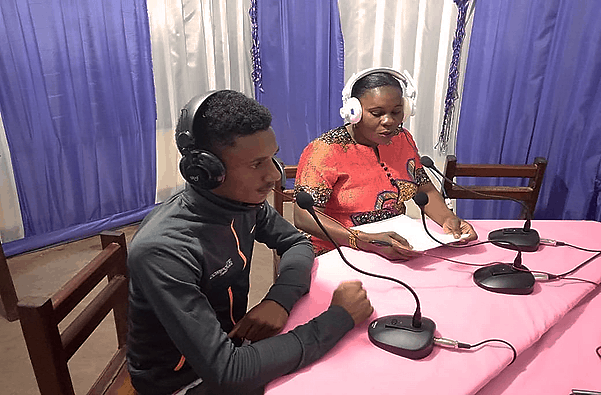Leveraging Local Journalism to Build Trust
Writing in the Stanford Social Innovation Review, Internews President Jeanne Bourgault argues that while the rollout of COVID-19 vaccines is an undoubtedly positive step, from Internews’ work with local journalists covering Ebola and SARS, “another, insidious challenge [looms] to ensuring public health amid a crisis: a deficit of trust.”
Trust is vital to overcoming the hesitancy that can prohibit herd immunity. To build trust with communities, Bourgault draws on the experience of the journalists Internews works with to recommend three deeply local methods to build trust:
- Mobilize Trusted Local Messengers
- Create Two-Way Conversations
- Embrace Transparency
The global community engaged with combatting COVID-19 must understand the role of journalists on the frontlines of communicating with hard-to-reach communities.
“Local journalists can be a great ally in the fight—they already claim a position of trust in communities, they embrace communication techniques that emphasize listening and transparency, and they are increasingly skilled at data analysis and presentation.
Their help may make the difference in addressing concerns about the vaccine at a deeply local level and building pathways for trust.”
Read Bourgault’s full column in the Stanford Social Innovation Review
Journalists Act Fast in Response to Latest Ebola Outbreak
Proving that the skills learned in one health crisis can carry on to the next, journalists at local radio stations in the Democratic Republic of the Congo, many trained by Internews in previous Ebola outbreaks, responded immediately with health-sensitive programming at news of a 12th outbreak in the country.
Hours after confirmation of a new case, radio stations in the affected area started broadcasting public service announcements and reactivated local Ebola radio programs.
Listening clubs, started earlier in the year to engage with community members and place their concerns are at the center of the health emergency response to COVID-19, also adapted to respond to the outbreak.
Read more: Local Radio Plays a Leading Role in Responding to the New Ebola Outbreak
What We’re Reading
Speaking with The Center for Cooperative Media, journalist Jesse Hardman of Internews’ Listening Post Collective argues that while the shrinking space of local news in the United States is alarming, a close look reveals that nowhere is a complete news desert.
“There is tons of news and information getting shared, but not all of it is good, maybe some of it is misinformation. But even in the absence of a legacy media outlet, it’s not like the lights are out and people don’t have any news. What’s interesting, and what we care about, is where is that job being picked up? I feel like we can’t ignore all of the community-led efforts that fill this space.”
If we care about preserving local news, Hardman says, we should look to supporting and developing the community-led initiatives that are already filling information voids in their communities. Read more.
One More Thing
A free Internews e-learning course on reporting vaccines is coming soon! The self-paced course will walk journalists at all levels through the science and specifics of reporting on vaccines, vaccine deployment, vaccine hesitancy and more.
Sign up to be a member of the Internews Health Journalism Network – a free resource to help anyone build health reporting skills and contacts – you’ll be among the first invited to sign up for the course!
(Banner photo: Local radio stations began providing information immediately after news of a 12th Ebola outbreak in the Democratic Republic of the Congo. Local journalism has a pivotal role to play in public health. Credit: Internews)
